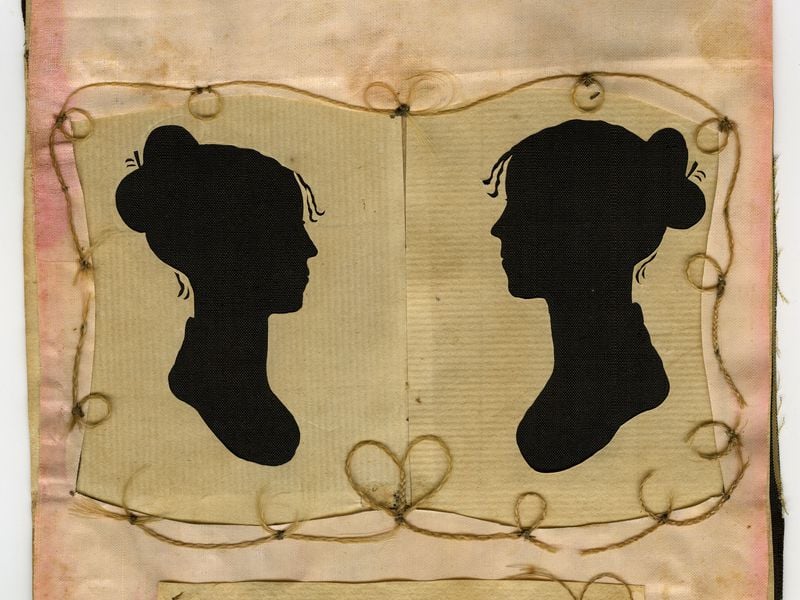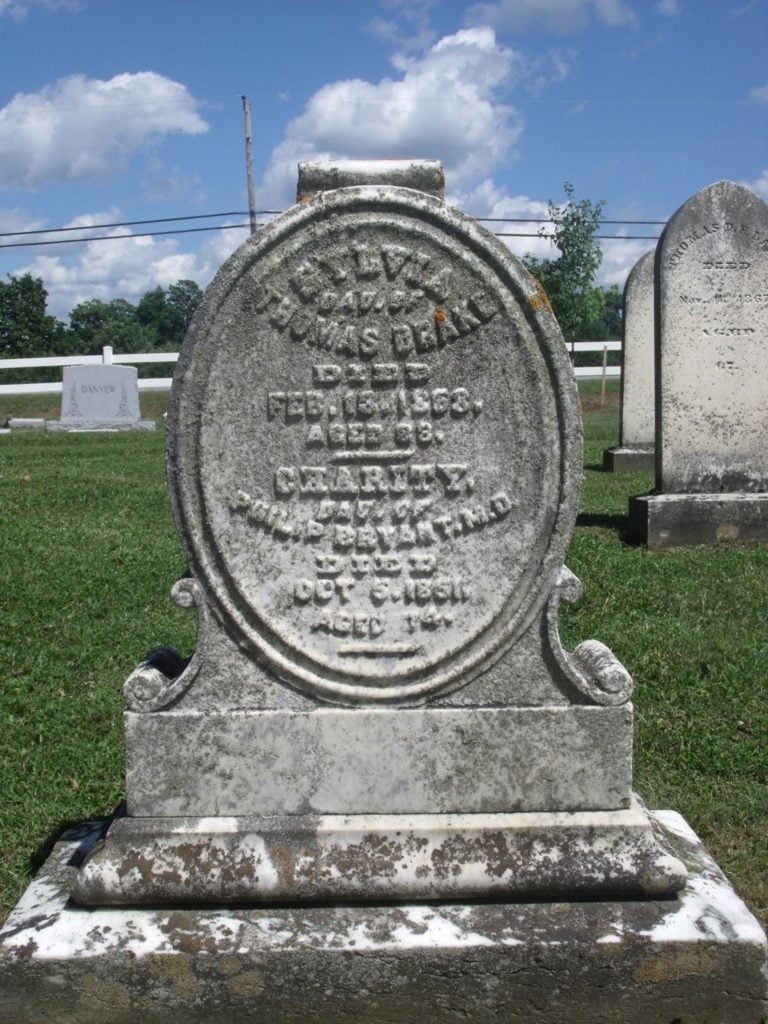On View
A Rare Image of One of the Earliest Known Same-Sex Unions Goes on View at the Smithsonian
The cut-out images of Sylvia Drake and Charity Bryant features in "Black Out: Silhouettes Then and Now."

The cut-out images of Sylvia Drake and Charity Bryant features in "Black Out: Silhouettes Then and Now."

Sarah Cascone

Amid the paper silhouettes on view in “Black Out: Silhouettes Then and Now” at the Smithsonian Institute’s National Portrait Gallery is a possible art historical first: a portrait of a same sex couple dating to the early 1800s.
The artwork depicts Sylvia Drake and Charity Bryant, who met in a small town in Vermont and quickly fell in love. The two women’s heads face each other, their black profile surrounded by a border of hair, braided into a heart. The portrait is on loan from the Henry Sheldon Museum of Vermont History in Middlebury, Vermont, which has described the women’s relationship as “A Vermont Love Story for the Ages.”
“It’s important to note that people of all backgrounds, of all sexual orientation, have been in this country from the very beginning,” Asma Naeem, the NPG’s curator of prints, drawings, and media arts, who organized the current exhibition, told Smithsonian. “Silhouettes allowed these kinds of stories to be told.”
Bryant and Drake’s 44-year union is just one of a number of known same-sex relationships in early US history, but it is perhaps the best-documented. Their love story is the subject of Rachel Hope Cleves’s 2014 book, Charity and Sylvia: A Same-Sex Marriage in Early America. (Uncovering the hidden histories of the LGBTQ community and stories like Bryant and Drake’s offered important historical precedents that may have helped pave the way for the landmark 2015 Supreme Court decision legalizing same-sex marriage.)

Charity Bryant and Sylvia Drake, a 19th-century lesbian couple, share a gravestone. Photo courtesy of Rachel Hope Cleves.
In 1807, Drake, age 22, and Bryant, 29, both found themselves in Weybridge, Vermont. Bryant, a talented tailor who had previously been the subject of much gossip due to her close relationships with women, opened a shop and hired Bryant as her assistant.
Their shared business allowed the two to live together, an unconventional arrangement that didn’t prevent them from being active in the local church and both accepted and respected by their neighbors. They lived together for the rest of their lives and shared a gravestone, united even in death.
“What made their relationship work was how public it was,” Cleves told the Washington Post in 2015. “Charity and Sylvia were enormously valued in the community. They did everything from leading the local charitable organizations to contributing money to the church… and people just chose not to know what was inconvenient to know.”
For proof that their relationship was indeed romantic, one needs to look no further than Bryant’s nephew, the noted poet and journalist William Cullen Bryant, who wrote openly of his aunts’ relationship in “Letters of a Traveller” (1850).
“I would tell you how, in their youthful days, they took each other as companions for life, and how this union, no less sacred to them than the tie of marriage, has subsisted, in uninterrupted harmony, for more than forty years,” he wrote. “I could tell you how they slept on the same pillow and had a common purse, and adopted each other’s relations.”
Today, same-sex marriage is legal across the land, and Bryant and Drake’s love is immortalized, their cut paper profiles on view in a national institution funded by the government.
A centuries-old technique still embraced by artists today—contemporary practitioners include, most famously, Kara Walker, as well as Camille Utterback and Kumi Yamashita—silhouettes were and are a democratized art form. “Black Out” offers a broad view of US society in the 19th-century through to the present day through the lens of the silhouette, an affordable medium that was used to depict people at all levels of society, from slaves to the president—and even a lesbian couple.
“Black Out: Silhouettes Then and Now” is on view at the Smithsonian Institute’s National Portrait Gallery, 8th and F Streets NW, Washington, DC, May 11, 2018–March 10, 2019